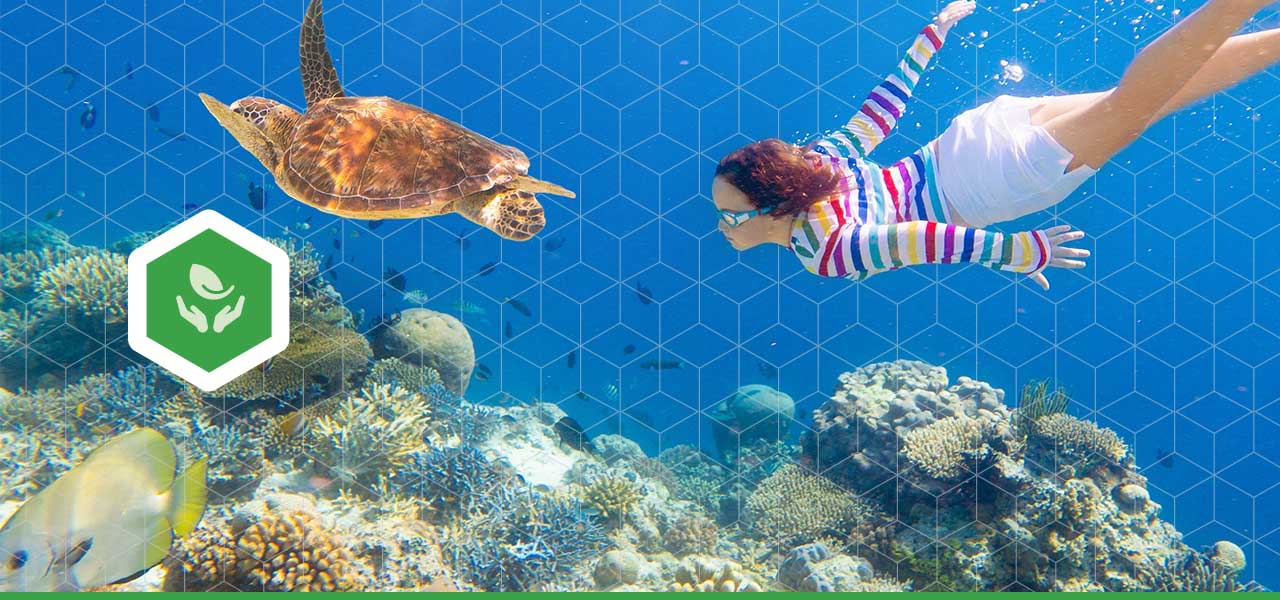
What’s one of the first things you do when you get to the ocean? It’s probably to take a deep breath, inhaling the instantly familiar smell that inspires calm, evokes memories, and lets you know exactly where you are.
Every other breath you take is provided by the ocean, which supplies half of the entire planet’s oxygen. It is Earth’s life support system: it regulates our climate, feeds us and innumerable other species, and its health and well-being are critical to maintaining our own – yet we do not behave as though it is.
Overfishing has driven most of the ocean’s large predators into extinction and vastly reduced the populations of fish and other life. Pollution, which has already destroyed 27 percent of our coral reefs, is damaging niche ecosystems in ways we are only beginning to understand. Plastics and other garbage are everywhere, and can form “patches” – including one larger than Texas. Cruise ships and tankers dump human waste, oil, and other byproducts straight into the water. Climate change is raising the ocean’s temperature and acidity, thus melting icecaps, increasing the severity of storms, and destroying still more life.
The ocean is issuing a loud and clear SOS, and Weizmann Institute scientists are listening. Prof. Ilan Koren, head of Weizmann’s de Botton Center for Marine Science, says that Institute researchers “are contributing up-to-the-minute analyses of how marine ecosystems are responding to the twin challenges of climate change and human-generated pollution.”
A complex problem requires a multifaceted response; thus, these researchers use tools and approaches from fields such as biology, chemistry, physics, and materials science to “clarify what’s going on beneath the waves.” Prof. Koren adds: “These findings may contribute to humankind’s ability to rehabilitate endangered ocean ecosystems, and protect the planet we all call home.”
Just some of this research is shared below.
-
Early warning of extreme climate events. Rising global temperatures are increasing the rate of evaporation from the ocean – which, in turn, drives the formation of stronger and more frequent storms. Dr. Shira Raveh-Rubin studies the causes and dynamics of extreme weather, with particular focus on highly destructive cyclonic storms that, in addition to leaving a trail of destruction, transport moisture and pollutants across long distances.
Working with international partners and using massive meteorological datasets, Dr. Raveh-Rubin aims to develop diagnostic tools for understanding specific features of weather systems. Her ultimate goal is to identify the factors and mechanisms that determine the location, intensity, and frequency of extreme climate events such as intense droughts, floods, heavy precipitation, and dangerous storm systems. This could lead to early-warning measures that enable us to prepare, evacuate communities, and otherwise take action to reduce the impact of weather-related disasters.
-
Tiny particles, huge impact. Liquid and solid particles called aerosols that hover over the surface of the ocean are among the most significant factors in climate research, but their chemical properties and physical dynamics are poorly understood. Using a combination of state-of-the-art chemistry and microbiology tools, Prof. Yinon Rudich is working to clarify the role of oceanic aerosols as part of the overall emissions that contribute to air pollution, drive global climate change, and affect human health. His discoveries about atmospheric aerosols are helping build scientific understanding of global climate dynamics, as well as how the aerosols impact ecosystems – on land and at sea.
-
Breaking down plastics. Profs. Assaf Vardi, Ilan Koren, and Yinon Rudich collected water samples during successive voyages of the Tara, a research schooner that serves as a floating laboratory for oceanography and climate experts from all over the world. When the scientists analyzed the samples, they found high levels of microplastics: fragments of our broken-down plastic pollution. These alarming results reveal how near-ocean emissions facilitate the transport of microplastics from the shoreline to the deep ocean, where they affect marine ecosystems, are consumed by sea life, disrupt food chains – and eventually, when transferred into the atmosphere as aerosols or eaten in seafood, can harm human health.
-
Looking back to predict climate’s future. In order to understand climate change, we need to compare today’s dynamics to those that have occurred over the history of the planet. To do so, Prof. Aldo Shemesh is using oxygen isotopes from sediments to reconstruct the climate of the past. He looks at variations in surface water temperatures, rates of ice melting, and other phenomena; over time, such changes affect levels of atmospheric CO2.
Prof. Shemesh is now developing two new approaches: analyzing oxygen isotopes left behind in the mineral skeletons of marine protozoa called Radiolaria, and examining the chemical content of reefs constructed of marine mollusk shells. Such shells can be used to reconstruct past sea-surface temperature, productivity, CO2 levels, and continental runoff. Together, these approaches provide a more robust timeline of the chemical changes that have occurred in the ocean, and will help put present and projected climate trends into historical context.
As climate change rapidly increases and Earth’s mighty oceans are ever more diminished, the need for forward-looking, fact-based research has never been more urgent – and the Weizmann Institute is leading the way. They – and our oceans – need your help.
